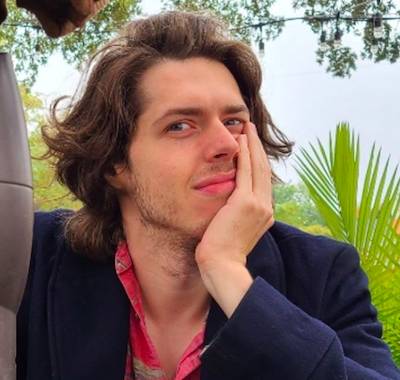From Script to Scream: Stephanie Allain on Producing Blumhouse’s Latest Nightmare, “The Woman in the Yard”
Stephanie Allain is a trailblazing producer. She was the Senior Vice President of Production at Columbia Pictures, where she oversaw films such as Boyz N The Hood and Desperado. From there, she became the President of Henson Pictures and eventually launched her production company, Homegrown Films. Homegrown Films is behind Hustle & Flow, Beyond the Lights, and Exhibiting Forgiveness, a film Allain is deeply proud of.
Teaming up with horror powerhouse Blumhouse for a second time, the producer brings us Jaume Collet-Serra’s spine-tingling The Woman in the Yard. This atmospheric thriller plunges viewers into the nightmare of a family tormented not only by the eerie titular specter but also by their own devastating emotional wounds. At the heart of this Georgia-set chiller stands grief-stricken artist Ramona, portrayed with haunting intensity by Danielle Deadwyler. It was Deadwyler’s commanding presence—previously showcased in acclaimed performances in Till and The Piano Lesson—that proved irresistible to Allain, cementing her decision to shepherd this bone-chilling production.
Recently, Allain spoke with The Credits about the crews in Georgia, her work toward securing more below-the-line work in California, and tales from her career.
Now, after 15 years in the business of making movies, Blumhouse is a well-oiled machine, but you still have to stretch your dollars on their productions. How do you do that these days?
That’s the name of the game for me. My last movie was six or seven [million]. We had a little bit more on this, and that’s what I bring: that scrappy, roll-up-your-sleeves, lets-get-it-done attitude. We’re all in this together. We are asking people to bring their best without throwing money at them. What that means is they’re there because they want to contribute to this. One of the things that’s important to me as a producer when I’m staffing up department heads is that I don’t care how many Oscars you’ve won. Do you feel the passion that we—the writer, director, producer—feel to get this movie done? You go the extra mile when you need to.
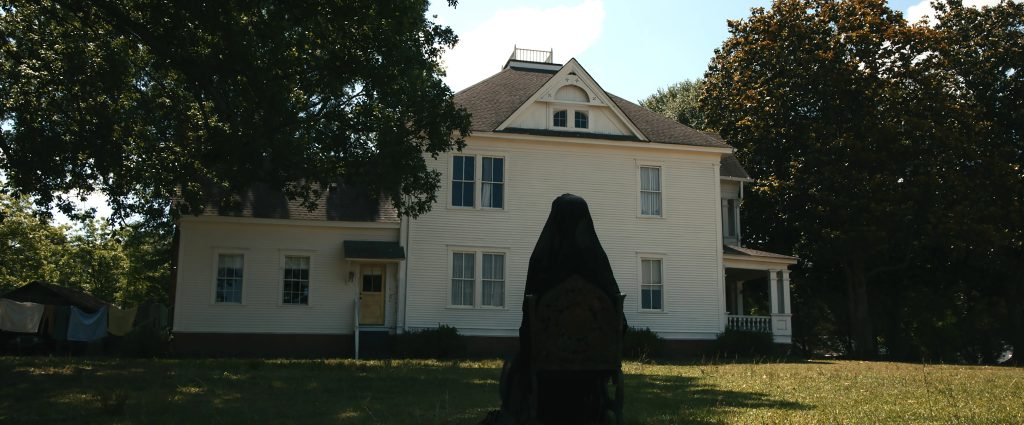
You’ve had many experiences shooting in Georgia, right? How do you enjoy it there?
I’ve shot there a lot. This was the first time I shot outside of Atlanta. Atlanta has become so groovy, so cool – a town with great art and restaurants. I love being there because it’s so integrated. Unlike L.A., it’s very cosmopolitan. People don’t cross the street when you’re walking down the street, seriously. I think people in Georgia have been grappling with these issues for a longer time, and I think they’re more advanced than we are, to be honest. It’s the feeling of being in the South. I’m from New Orleans, my people are from New Orleans, so there’s just a home vibe when I’m shooting down South. But this time, we were out in Athens, which is an hour and a half away – a college town, a music town, old buildings, and a cute river runs through it. We were actually working even further than that in Bostwick, which is where the house was.
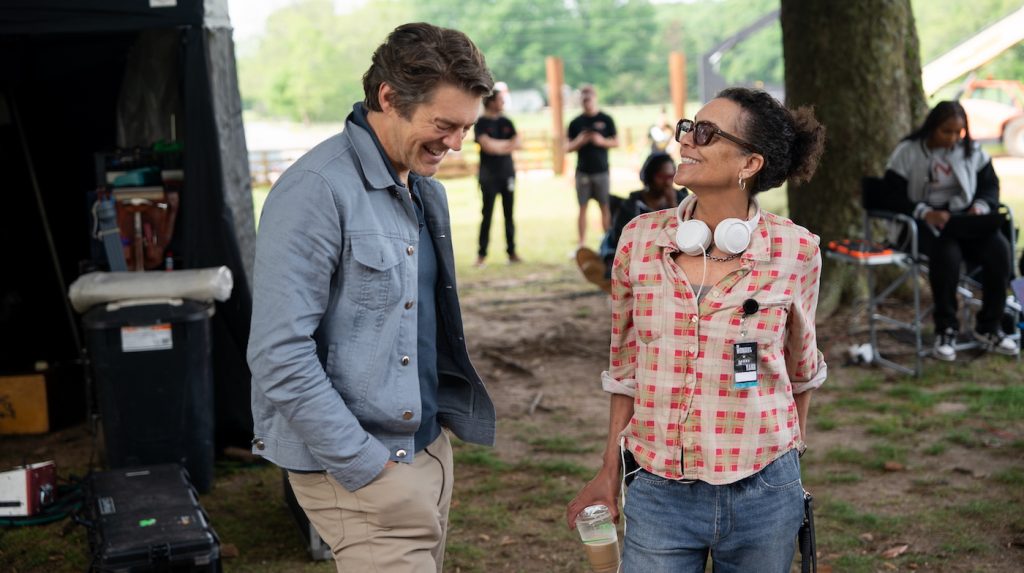
How was the crew there?
I think people are so grateful to be working. There was this mix of, “We just had this big strike to win all of our rights, to solidify our rights as a union, and we’re so grateful to be here working.” There was kind of an up-leveled professionalism, I would say. Of course, sometimes you bring in your department heads, but the fun of shooting there is that, over the years, they’ve built such a good base of crew that you get great folks.
It is an extraordinarily tough time for crew members, but how much hope do you have for the future of the industry getting crews back to work?
I’m the president of the PGA, the Producers Guild of America. We are engaged, as is every other union, in the movement in Sacramento to get a better, bigger, higher number incentive so that we can lure work back here. It’s hard. But everybody – all the stakeholders – are heavily engaged. They were all in Sacramento yesterday. They were there last week. This is an ongoing effort. Strangely, the fires exacerbated the need more than ever because people have lost their homes. They want to be around and don’t want to be somewhere else while they’re dealing with soil testing and this and that. All I can say is there’s a bunch of smart folks who are trying to help Gavin [Newsom] pass this bill, and hopefully, it will happen. We have our fingers crossed for July. It’s probably not enough because other places are offering better incentives above and below the line. Ours is just below the line. While other places are making it attractive to live and to work, L.A. is going to have a tough road.
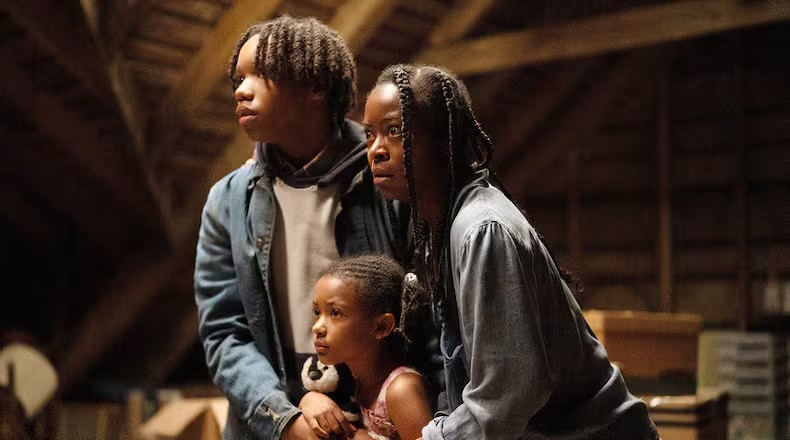
Is it a day-to-day gig, sorting out those hurdles?
I would say it’s more week-to-week. I have other people on the front line, but I do get apprised of where we are on a weekly basis. We convene some of the smartest producers in town – some of the biggest producers, some of the smallest producers, but the smartest ones – to advise and to travel with us to Sacramento to make the case directly. Yeah, it’s a struggle.
Well, we’re hoping for the best for the crews at The Credits. With Jason Blum, how do you two see eye to eye when you talk about movies?
I’ve known Jason forever because we participate in the Academy executive committees. He called me up on The Exorcist: Believer. I can remember the first two movies that got me into this business, The Exorcist and The Godfather. I snuck into theaters at the El Rey and the Wiltern to see those movies, and I’d already read the books. Who’s going to turn down The Exorcist? I learned so much just on that first shoot about the steps to make horror jump, how to put it together, the shots you need, and the expressions on actors’ faces.
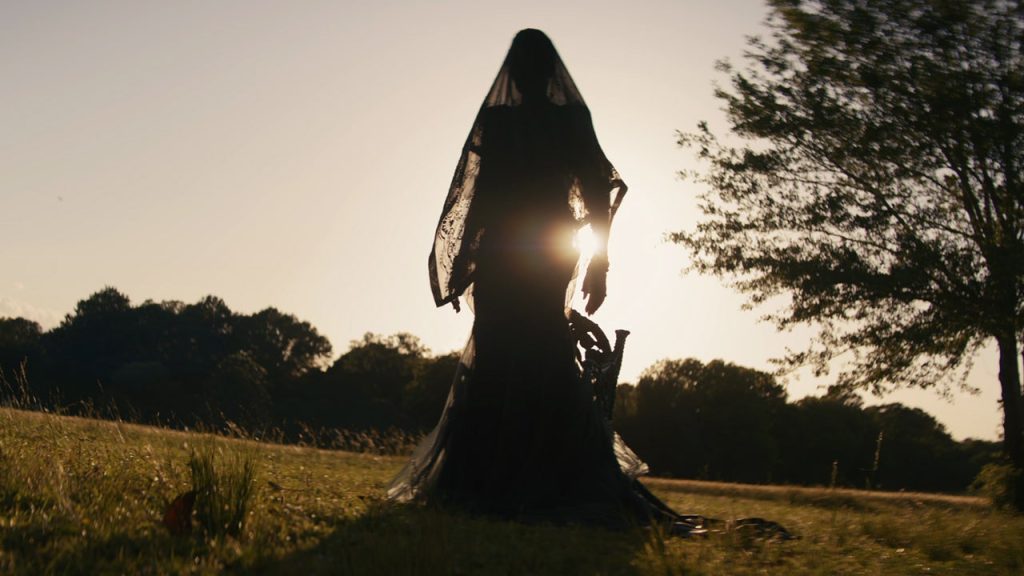
What were some other lessons in crafting a horror movie like The Woman in the Yard?
The theory of the jump scare. You need five. You need five good jump scares to make people feel like they’ve experienced a horror movie. I learned that the eyes are important to connect with the audience – the horror in people’s eyes. You gotta shoot that. Jaume taught me this: the three beats it takes to get that jump scare – the ratcheting up of the horror, the deflation of it, and then boom, it comes back. It’s scientific. I’m a teacher’s pet, so when you study anything, the patterns emerge, and you can then use those patterns to quickly get to the end result.
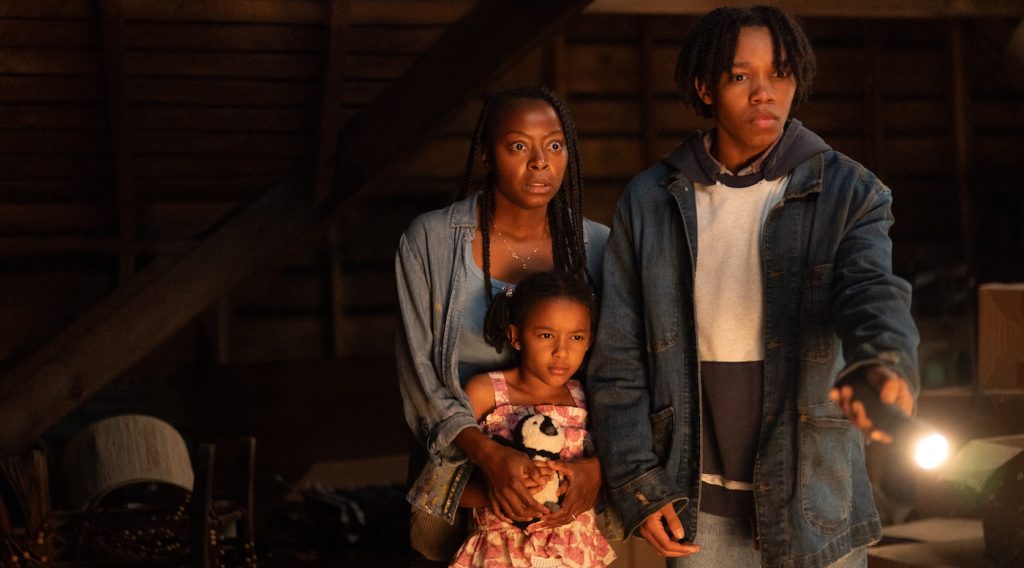
What usually connects you to a filmmaker?
My heartbeat’s fast. Simple. Whether I’m watching something or reading something they’ve created already, it’s like, Wow, I want to be around you. I want to realize this with you. It’s usually tied to the writing, but sometimes, in [director] Craig Brewer’s case, I read Hustle & Flow, and I was like, Oh my God. I could hear the music. There was no music written there, but I could hear the music. I could feel the longing for art and creativity as a means of uplifting this character. With Robert Rodriguez, I saw the first version of El Mariachi in Spanish, and I was like, This kid has some chops. Flew to Texas to meet him. It is a visceral connection to the voice.
You’ve produced such vital films. What screening experiences have meant a lot to you over the years, when audiences really connected to these fresh new voices you were introducing?
I’ve brought a few movies to Cannes, but the Boyz n the Hood experience was crazy. We got on the plane, just scrappy young Black folks, and we got off the plane, and the paparazzi acted like we were Tom Cruise. There was such anticipation, I don’t even know how they did that. When we had our screening, there was a 20-minute standing ovation. I don’t even know if you can imagine that. It was subtitled, a French crowd, you know what I mean? But they got it. That was my first film. It was a powerful moment to say, If you build it, they will come. If you are specific, it will be universal. And that’s never left me.
That’s excellent.
The last funny one is from when I was working for the Henson Company – a screening of Elmo in Grouchland. I had famously fired the original villain, who was this mild-mannered guy, and hired Mandy Patinkin instead. Mandy scared the bejesus out of these kids so much that they started running for the exits. I was sitting in the back row, sweating. I couldn’t believe what a f**k-up I did, because my first Henson movie was Muppets from Space, where it opens with Kermit singing “Brick House.” I was just bringing my own sensibility to these movies. It got so bad that we had to literally stop the movie and insert Bert and Ernie to reassure the kids: “It’s okay, kids. It’s going to be okay.”
So that’s when you first learned how to scare audiences?
Yeah, just hire Mandy. So f**ing scary.
Like Exhibiting Forgiveness, you’re still producing personal movies with exciting voices. As you’ve said in the past, it’s about “the audacity to be authentic.” How has the state of the industry challenged or emboldened you to keep going in that regard?
There are always artists who have something profoundly personal to say. The barrier to entry has lowered in terms of what it takes to make a film. As Steven Soderbergh has shown us, you can shoot a movie on a cell phone. We have more opportunities to create, but perhaps fewer opportunities to get those films out there. At the same time, theaters are saying, “Wait a minute, where are the movies? We need more movies.” People are still making films, but there’s going to be a shift in how audiences access them. The obvious example is Taylor Swift cutting out the studio and going directly to AMC to release her film. I know a lot of people are exploring versions of that model because, at the end of the day, theaters need to sell popcorn.
Any solutions?
A lot of smart minds are working on how to create a fund for marketing movies that don’t have studio backing but are good films. Think of all the movies at festivals that don’t get sold. Where are they? Where’s that graveyard of great movies? Somebody’s going to figure out that mechanism. We’ve been telling stories since humans could talk to each other. The shifts in technology, viewership, pandemics, strikes, all the things that get in our way are kind of just blips. We’ve got to stick it out for the long run. We’ve got to keep supporting art. We have to support other people’s movies and keep our community together. I don’t see it going away.
Featured image: Okwui Okpokwasili as the Woman in The Woman in the Yard, directed by Jaume Collet-Serra. © Universal Studios

